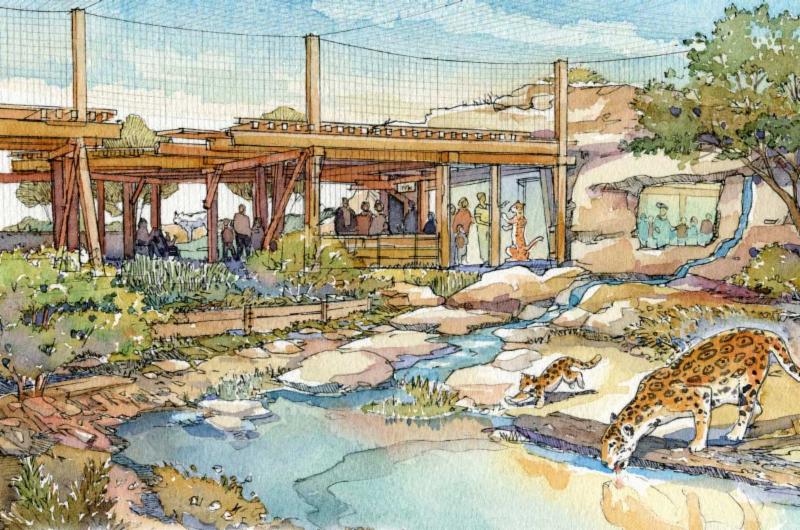It's summer! And, there are a lot of things we do during the summer like vacations and special excursions for the kids. Take for example the zoo. Ever wonder about zoo design?
Designing for animals and humans
A lot of thought and planning goes into zoological park design these days, and design plays a big part. As we learn more and more about the animals around us and how we need to adapt to sharing our mutual space, zoological parks are leading the way to finding better ways to create habitats for animals and more immersive experiences for humans.
Driving the design of captive animal habitats are the constantly improving standards which lead to more and more environmental and behavioral enrichment. More animals have moved from bathroom-like structures into large and interesting indoor and outdoor planted spaces where they can forage for natural food, live in designed places more attuned to their natural habitat, and explore safe areas where they can thrive. Animals' natural behaviors are now given priority and zoo exhibits provide shelters, perches, vegetation, micro-climates, and varieties of ground substrates, along with natural and man-made elements that enhance their quality of living.

So that we, as humans, can have these immersive and connective experiences with wild animals and their habitats, designers and engineers have to think about animal and human behavior. Consider the force associated with a thousand pound polar bear pushing off a glass enclosure that supports the hydrostatic pressure of more than eight feet of water. Then, think about the strength of a glass necessary to stop a 500-pound leaping lion.
Most of us are probably familiar with moat design that many zoos employ, especially for tiger exhibits. In the case of the Bengal Tiger, wet moats may work best. This coupled with viewing shelters containing laminated tempered glass are very popular among zoos and zoo visitors, around the world. This is an example of a well-designed habitat that provides an immersive human experience.
Future zoological parks
Given the reduction in availability of wild animals around the world, this will become a driving force that shapes how zoos function and operate. Animals we typically associate with zoos such as tigers, polar bears, elephants, gorillas, giraffes, and rhinos are diminishing in the wild and some are on the brink of extinction. Through a worldwide effort, many zoos are working together to breed these endangered species, establish larger breeding groups, and build the best habitats possible to save and perpetuate species. As a result, zoos will become more involved in conservation and continue to evolve as gateways to the natural world.
A zoo near you
Did you know that the North Carolina Zoo, located in Asheboro, NC, is the largest "natural habitat" zoo in the United States? It spans 2,200 acres. Want to learn more? Log on to
www.nczoo.org